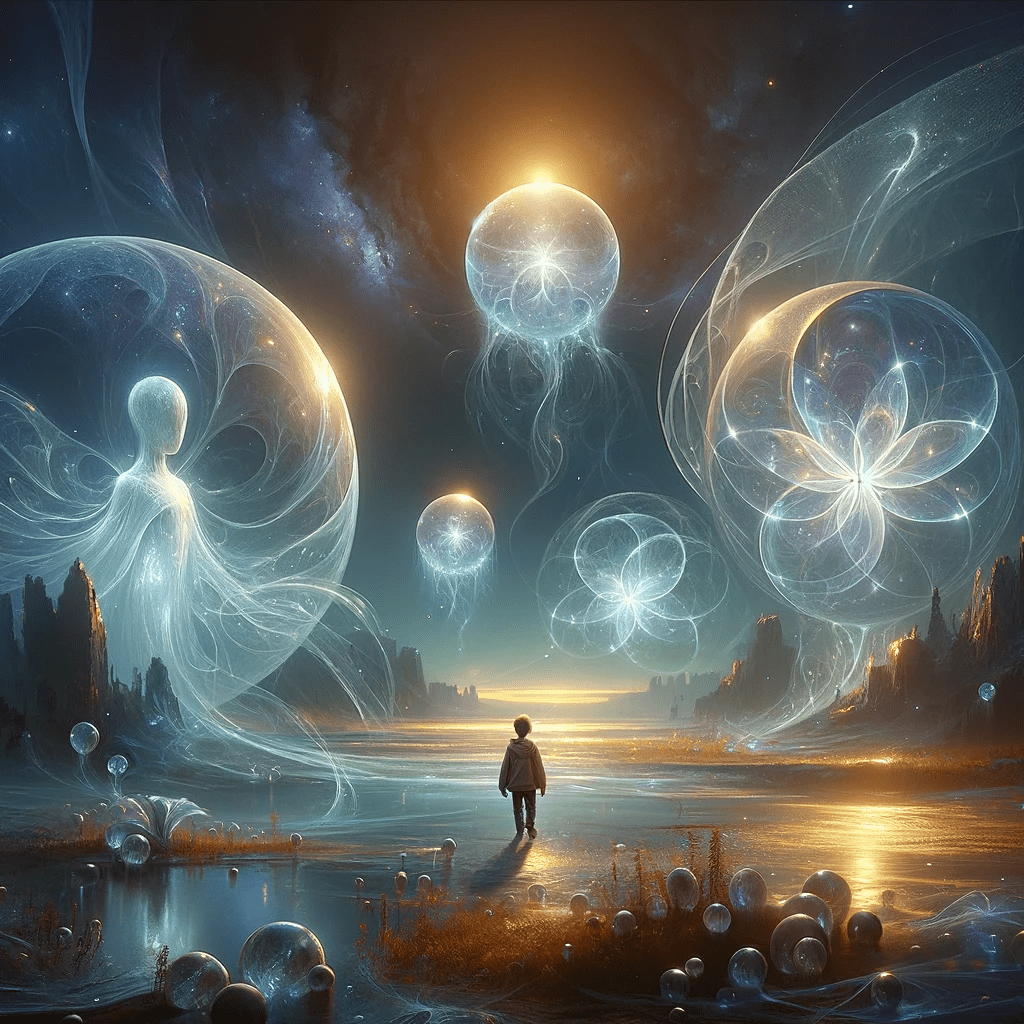The Others

In the novella “Chains of the Sea” within the collection, ‘The Others’ are an advanced alien species. A crucial aspect of the narrative revolves around the interaction between ‘The Others’ and humans, particularly through the perspective of a young boy named Tommy.
In the story, ‘The Others’ are not the typical physical beings that you might expect in traditional science fiction. Instead, they are depicted as non-corporeal, multidimensional entities who are, in fact, quite harmless and peaceful. They exist and operate on different planes of reality and perceive the world in ways fundamentally different from us, which raises interesting questions about communication and understanding between species.
‘The Others’ do not communicate in the same way humans do. They use a form of telepathy, which Tommy, the protagonist, is uniquely capable of understanding. This theme explores the potential challenges and misunderstandings that can arise from our anthropocentric views and the necessity for broadening our understanding of intelligence and modes of communication.
It’s noteworthy that ‘The Others’ don’t seem to harbor any ill-will or harmful intent towards humanity. Instead, they’re more akin to peaceful observers, pointing to a different portrayal of ‘alien’ species in the narrative that deviates from the traditional antagonist role often ascribed to extraterrestrials in other science fiction works.
The concept of ‘The Others’ as depicted in Gardner Dozois’s “Chains of the Sea” invites us to challenge our preconceptions about life beyond our planet. While this is a work of fiction, it draws upon several key themes and speculations in the scientific community and our understanding of the universe that we could explore in real-life contexts:
- Non-Corporeal Existence: Most depictions of alien life in popular culture are anthropomorphic, meaning they have a physical form somewhat similar to humans. However, in reality, life forms beyond Earth could be vastly different from our expectations. They might not rely on the same biological processes or physical structures as Earth-based life. The portrayal of ‘The Others’ as non-corporeal, multidimensional entities represents this concept. Realistically, forms of life in the universe could indeed operate on scales or dimensions currently beyond our understanding.
- Different Planes of Reality: The idea that ‘The Others’ exist and operate on different planes of reality can be related to theoretical physics, particularly concepts like string theory and multiverse theory. These theories propose that there are additional dimensions beyond the three spatial and one temporal dimensions we perceive. If other entities could exist and interact within these dimensions, their perception of reality would be drastically different from ours.
- Alternate Modes of Communication: ‘The Others’ communicate via a form of telepathy. While telepathy as it is known traditionally is not well understood, the broader point here is that alien life forms may communicate in ways vastly different from human languages. Scientists already study communication in non-human Earth species like dolphins, whales, and even trees, which use completely different channels and processes than human speech. Therefore, the idea that an alien species could have a wholly unfamiliar form of communication isn’t far-fetched.
- Peaceful Coexistence: The peaceful nature of ‘The Others’ contrasts with many portrayals of aliens in popular media as hostile invaders. In real life, any assumptions about the intentions of extraterrestrial beings are purely speculative. As highlighted by the Search for Extraterrestrial Intelligence (SETI), if advanced civilizations exist in the universe, they might be more interested in observation and knowledge than conquest or destruction.
Overall, ‘The Others’ in Gardner Dozois’s “Chains of the Sea” serve as a metaphorical representation of the unknown and unfamiliar. They challenge our perceptions of intelligence, existence, and communication, emphasizing the importance of embracing a more inclusive, universal perspective.


